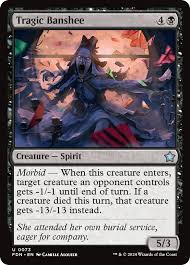The Cultural Significance of the Banshee in Irish Folklore

Introduction
The banshee, a legendary figure in Irish folklore, has captivated and terrified audiences for centuries. As a harbinger of death, the banshee embodies a unique blend of cultural significance, historical stories, and mythological beliefs. Understanding the banshee’s origins and representations offers insight into the values and fears of Irish society throughout history.
The Origins of the Banshee
The word ‘banshee’ originates from the Irish term ‘bean sídhe’, which translates to ‘woman of the fairy mound’. Folklore describes her as a female spirit, often portrayed as mourning and crying, signalling the imminent death of a family member. This figure is deeply rooted in the ancient practices of the Celts, who believed in a connection between the living and the supernatural. In many tales, the banshee is depicted as either an old woman or a young, beautiful maiden, emphasizing the duality of life and death.
Modern Interpretations and Representations
In contemporary culture, the banshee has found her way into literature, film, and even video games, often evolving from her traditional lore. While she still embodies ominous warnings, modern variations explore her character depth and motivations, creating stories that resonate with themes of loss, grief, and the ties to one’s ancestry. Notable appearances in popular culture include the television series ‘Supernatural’ and the animated film ‘The Secret of Kells’. These representations often aim to reinforce the emotional undertones associated with the banshee, connecting it with broader human experiences of sorrow and danger.
The Banshee as a Cultural Symbol
The banshee serves not only as a figure of folklore but also as a cultural symbol representing the richness of Irish identity. In a society that values storytelling and ancestral connections, the banshee acts as a reminder of the past and the inevitable cycle of life and death. Many Irish communities continue to recount tales of the banshee, preserving this important aspect of their heritage. As a result, the banshee has transcended her original role, becoming a metaphor for the broader themes of loss and the presence of the supernatural in everyday life.
Conclusion
In conclusion, the banshee occupies a significant place in Irish folklore, capturing the complexities of life, death, and the bonds between individuals and their ancestry. As tales of the banshee continue to be shared and adapted over generations, she remains a powerful cultural figure, reflecting the values and beliefs of those who tell her story. The significance of the banshee endures, reminding audiences of the inevitability of death and the shared experiences of mourning that resonate across cultures.








